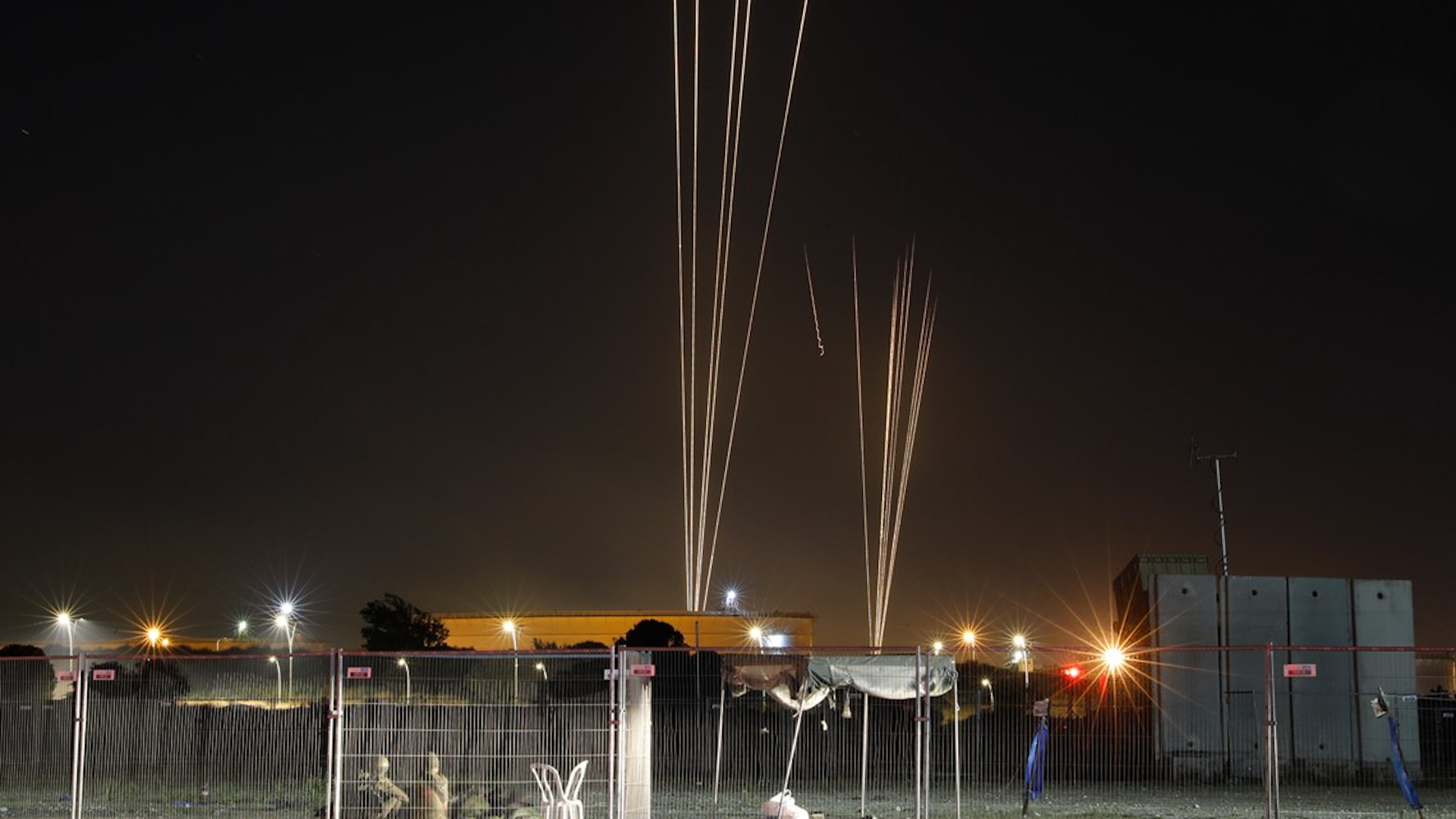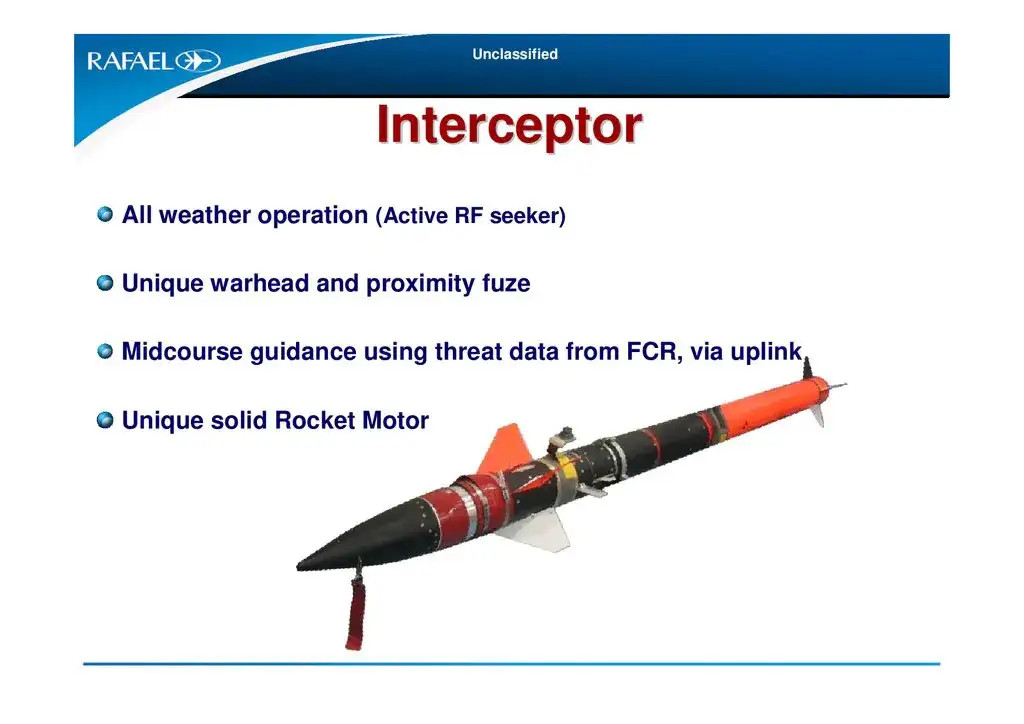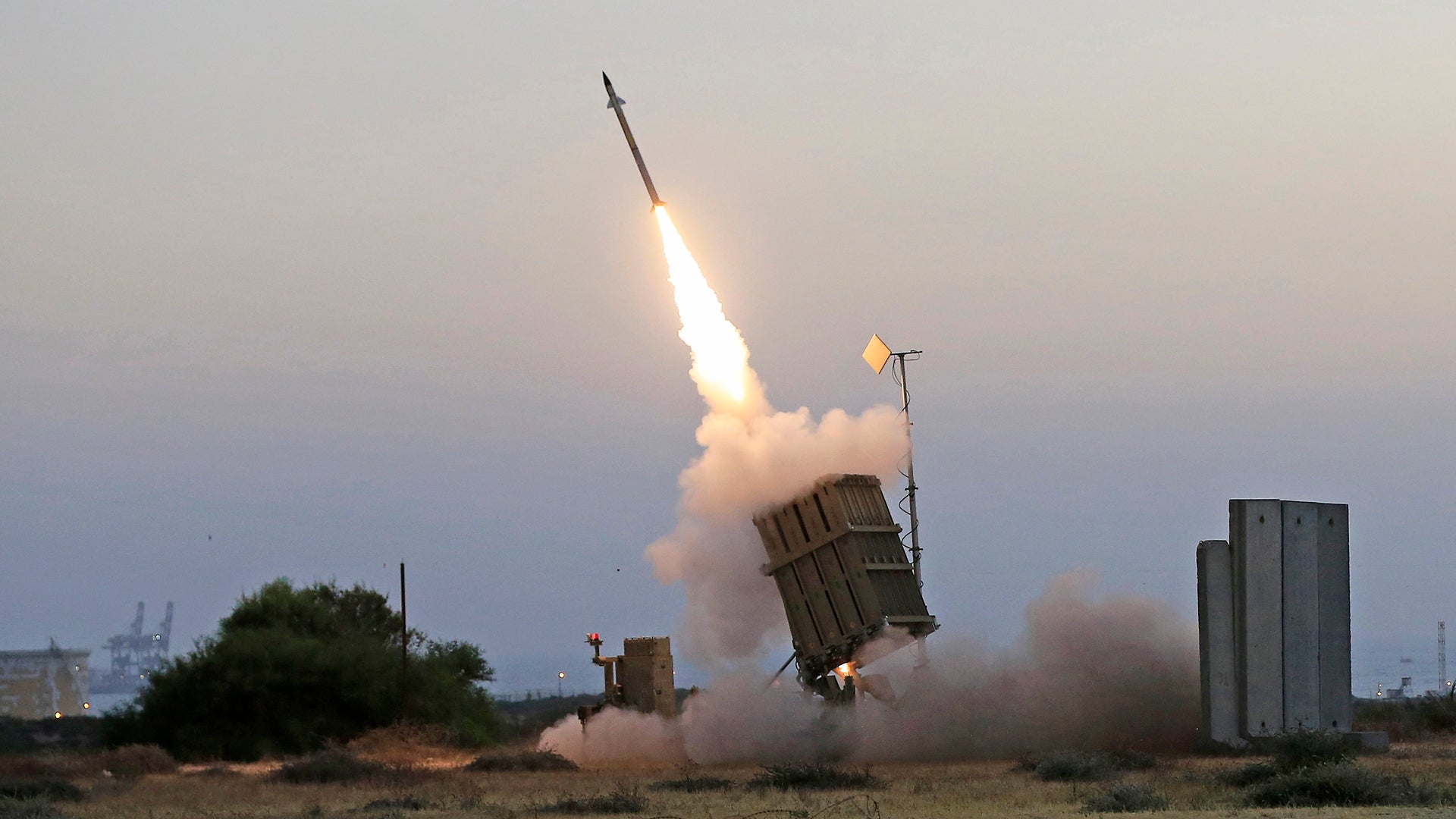Palestinian militants have fired more than 1,050 rockets at cities and towns across Israel from the Gaza Strip in less than two days. The Israel Defense Forces, or IDF, have been able to knock down hundreds of them thanks to Iron Dome defense systems and their Tamir interceptors. However, the sheer volume of rockets has underscored the limitations of employing Iron Dome against continous mass saturation attacks, which is clearly the tactic at play during this recent burst of violence. It also points to how this reality incentivizes Israel’s opponents to simply expand their arsenals in order to effectively penetrate Iron Dome defenses.
The Al Qassam Brigades, the militant wing of the Palestinian group Hamas, as well as Palestinian Islamic Jihad (PIJ), have been the groups primarily responsible for these attacks, which include the largest rocket barrages aimed at central Israel ever. The rocket fire has prompted Israeli retaliatory air and artillery strikes, including a number of targeted killings of senior Palestinian militants.

This includes a top commander of the PIJ’s rocket units and the heads of Hamas’ military intelligence security and military intelligence counterespionage departments. Israel has also been carrying out a campaign targeting relatively large office and apartment buildings in Gaza owned by Hamas, which it says are being used to support terrorist activities, though they may have residential apartments inside them.
This is all now part of some of the worst Israeli-Palestinian fighting in years, as you can read more about in The War Zone‘s initial reporting on this still-escalating conflict. Tensions are now growing between Arab and Jewish Israelis within the country, as well, with rioting and violent protests erupting in numerous cities and towns. Yesterday, the mayor of the city of Lod described the situation there as a “civil war” and Israeli authorities subsequently deployed elements of the country’s border guard to help quell the situation.
The cycle of rocket attacks and Israeli retaliation is still ongoing, which in turn has kept the IDF’s Iron Dome batteries busy. Yesterday, when Israeli officials said that the total number of rockets fired was at more than 480, they said that more than 200 of them had been successfully intercepted.
A complete Iron Dome system, the operation of which is heavily automated in many regards, consists of a number of launch units, each loaded with up to 20 Tamir interceptors, as well as associated radars, to spot and track incoming threats, and a battle management and control unit. Each highly maneuverable Tamir interceptor has an active radar seeker and a two-way datalink to receive additional targeting information in-flight to improve its accuracy. A proximity fuze triggers the detonation of a ring-shaped high explosive blast fragmentation warhead inside the interceptor when it gets sufficiently close to its target. You can read more about this arrangement and how it works in this past piece of ours.

Iron Dome and its Tamir interceptors are primarily designed for the so-called Counter Rockets, Artillery, and Mortars (C-RAM) role. However, the system has also reportedly demonstrated an ability to engage cruise missiles and small drones, as well as low-flying aircraft, as well.
The IDF has reported shooting down hostile unmanned aircraft flying out of Gaza during this recent fighting, but it is unclear whether Iron Dome batteries, rather than more robust air defense assets or even combat aircraft, have been responsible for any of those intercepts.
At the time of writing, there also does not appear to be any updated official tally for how many rockets have been knocked down now that the total launches have passed 1,000. We also don’t know how many Tamir interceptors have been fired at rockets in the past few days, but then failed to bring their intended targets down.
As of 2020, the Israeli Ministry of Defense had said that Iron Dome had successfully engaged 85 percent of all targets it had been employed against since the system was first deployed operationally in 2011. In January of that year, the manufacturer, Rafael, said that an improved version of Iron Dome had not missed once during a round of testing, portions of which are seen in the video below.

Still, regardless of what Iron Dome’s recent success rate, as well as what the total number of intercepts might be, the IDF has already admitted that it has not been able to bring down all of the incoming rockets flying at Israel from Gaza. There have also been reports of these defense systems being overwhelmed by the volume of these recent attacks, rather than this being a case of the IDF just ignoring some of the rockets, which are all unguided, that might appear headed toward areas where they are assessed to present little to no threat.
Hamas and PIJ both seem to have been stockpiling rockets, at least in part, with an eye toward being able to carry out these kinds of saturation attacks to get around the defensive shield Iron Dome provides. Both groups receive support from Iran, as well as Syria, which has included smuggled shipments of artillery rockets. Palestinian militants, with outside support, have also been able to locally fabricate increasingly longer-range rockets within Gaza, as well.
There are also reports that rockets are being fired from Gaza at very low trajectories, rather than along more typical higher-angle ballistic ones. This could be another way of at least attempting to circumvent Israeli defenses.
It’s also important to note that a relatively intact seeker section from a Tamir interceptor was recovered in Gaza in November 2019. However, there are no clear indications one way or another that Palestinian militants have been able to operationalize any information they, or their benefactors in Iran, may have been able to glean about Iron Dome’s capabilities and limitations, as a result.
No matter what combination tactics Palestinian militant groups may be employing, Iron Dome also faces more basic capacity and logistical limitations when faced with multiple barrages involving dozens, or even hundreds of rockets, carried out in relatively short time frames. It’s not clear how many Iron Dome batteries Israel has in service, in total, but, as of 2014, the plan was to eventually field at least 15 complete systems.
If a single Iron Dome battery has three or four launch units loaded with 20 interceptors, that means it only has between 60 and 80 Tamirs ready to fire at any one time. With 15 batteries each with four fully-loaded launch units, the total number of interceptors available would be 1,200. While the batteries are no doubt positioned to provide some overlapping zones of protection, no single one is anywhere capable of being able to respond to rocket attacks in all the areas that the entire defensive network covers. In other words, the number of interceptors at the ready during a localized attack is probably limited to the a single battery or a small number of the total batteries deployed.
In addition, it is known that the IDF’s concept of operations, at least in some cases, though perhaps not when responding to saturation attacks, involves firing two Tamirs at a single target to increase the likelihood of a successful intercept. The launchers themselves are designed to be relatively fast to reload, with the interceptors preloaded into arrays of launch canisters, but the process is not instantaneous, especially during a barrage where the battery itself is being targeted.
So, it’s not at all hard to see how repeated high-volume attacks in a particular area could overwhelm Iron Dome batteries. Clearly that reality is not lost on those prosecuting these attacks.
There is also the matter of the cost differential, especially if saturation attacks persist, as they have in this recent fighting, which can begin to drain existing stocks of Tamir interceptors and prompt the need to replenish them. The exact unit cost of the current generation Tamir interceptor is unclear, with past reports putting that price tag at between $40,000 and $100,000. Even at $100,000, they are very low cost when compared to other anti-missile interceptors and other surface-to-air missiles.
At the same time, even at that lower price point, if Israel has fired more than 200 of them in the past few days, that is more than $8 million worth of Tamirs. By that same calculation, 1,000 successful intercepts would mean firing off missiles worth a total of $40 million.
During the last major conflict between Israel and Palestinian groups in Gaza in 2014, Israeli received approximately $225 million in emergency aid from the United States specifically to boost its Tamir stockpiles. That conflict lasted around seven weeks, during which the Palestinians fired at least 4,564 rocket and mortar projectiles, according to the IDF.
While we don’t know the exact cost of the different types of rockets Hamas and PIJ have been firing at Israel, they are unguided weapons and are almost certainly orders of magnitude cheaper than Tamir interceptors. Past reports have said that Hamas’ older, lower-end Qassam rockets have cost between just $500 and $600 to make, each.
The cost disparity of employing Iron Dome against these lower-end threats is underscored by the fact that, for years, Iran’s annual total support for Palestinian groups in Gaza, not just including military assistance, was valued at an estimated $100 million. There were reports in 2019 that authorities in Tehran had bumped that up to $30 million a month, which, if true, would have been a massive increase in funding, in exchange for intelligence regarding Israeli missile capabilities. Those reports came months before the Tamir seeker section was recovered in Gaza in November of that year.
There are of course other cost considerations to take into account. Each rocket that an Iron Dome battery successfully intercepts prevents potential loss of life and property damage within Israel. The 2014 Gaza War led to nearly $40 million in insurance claims over damage from rockets and mortar rounds and around $1 billion in estimated indirect economic losses. With all this in mind, it is hard to argue against Iron Dome on cost grounds. It has been a highly effective and life-saving system, so far.
Iron Dome’s capabilities and its costs notwithstanding, it’s important to note that no missile or rocket defense system is perfect. Though they offer added layers of defense, they can only also present clear incentives to opponents to simply field more weapons to try to overwhelm them. This reality applies to trying to protect against threats ranging from lower-end unguided rockets to intercontinental ballistic missiles. I think it is safe to say we are seeing this strategy play out in Israel right now, at least to some degree.
No matter what, at least based on the current cycle of rocket attacks and Israeli retaliation, it seems very possible that the total number of rockets fired at Israel from Gaza in this new conflict will approach or exceed the figure from the war in 2014, and do so in a far more compressed timeframe. With that in mind, it seems equally likely that this current fighting will provide an array of new data, which will be of interest to Israel and its opponents, as well as other purchasers and prospective purchasers of the system, on the overall utility of Iron Dome against continuous larger-scale attacks.
Contact the author: joe@thedrive.com
